- About MAA
- Membership
- MAA Publications
- Periodicals
- Blogs
- MAA Book Series
- MAA Press (an imprint of the AMS)
- MAA Notes
- MAA Reviews
- Mathematical Communication
- Information for Libraries
- Author Resources
- Advertise with MAA
- Meetings
- Competitions
- Programs
- Communities
- MAA Sections
- SIGMAA
- MAA Connect
- Students
- MAA Awards
- Awards Booklets
- Writing Awards
- Teaching Awards
- Service Awards
- Research Awards
- Lecture Awards
- Putnam Competition Individual and Team Winners
- D. E. Shaw Group AMC 8 Awards & Certificates
- Maryam Mirzakhani AMC 10 A Awards & Certificates
- Two Sigma AMC 10 B Awards & Certificates
- Jane Street AMC 12 A Awards & Certificates
- Akamai AMC 12 B Awards & Certificates
- High School Teachers
- News
You are here
Mathematical Treasure: Hutton’s Mathematical Dictionary
Charles Hutton (1737-1823) was a leading force in late 18th century British mathematics. Besides being a prominent teacher of mathematics and textbook writer, he also produced mathematical references. One such reference was his two-volume Philosophical and Mathematical Dictionary (1815). Its entries provide readers with insights into the state of mathematics at this time.
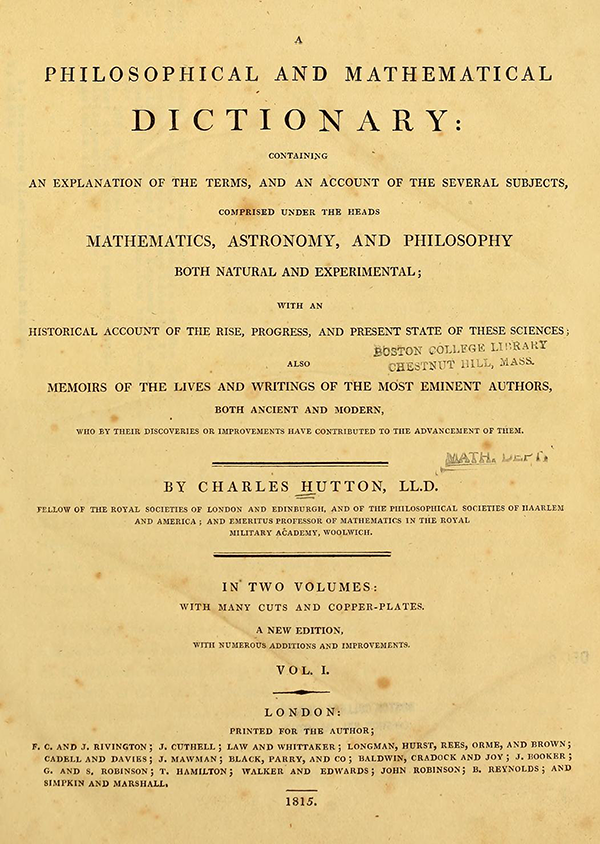
Hutton provided the rationale for his work in his “Preface.”
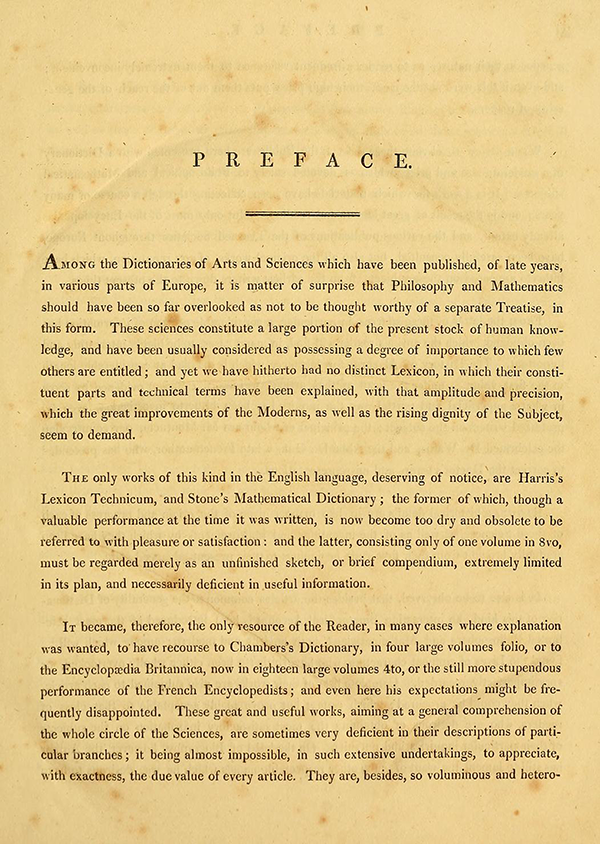
The definition for “Conchoid” is supplied on page 357.
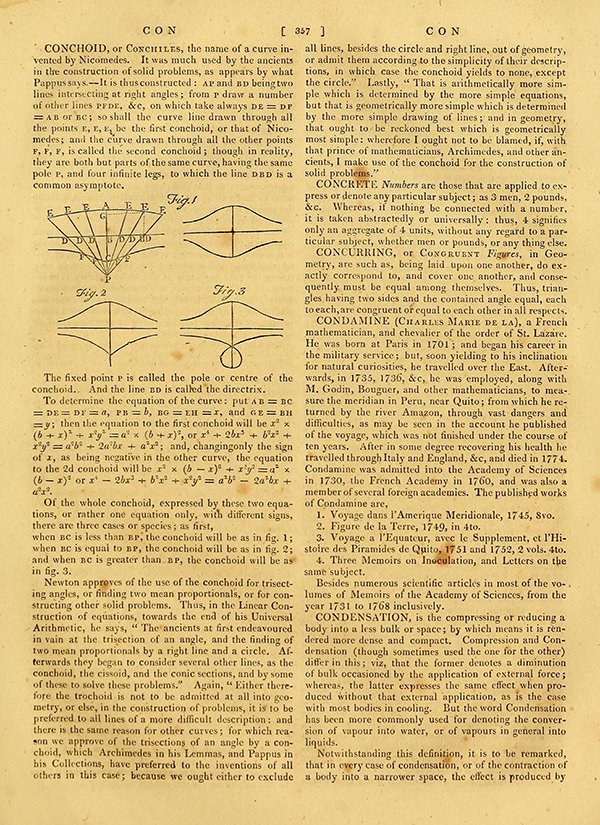
“Function” is defined on page 560. Although Leibniz used the term “function” as early as 1673 (see “The function concept,” MacTutor History of Mathematics Archive), the more mathematically rigorous definition to which we are accustomed was supplied in 1837 by Lejeune Dirichlet (1805-1859). As quoted in the MacTutor Archive's biography of Dirichlet:
If a variable y is so related to a variable x that whenever a numerical value is assigned to x, there is a rule according to which a unique value of y is determined, then y is said to be a function of the independent variable x.
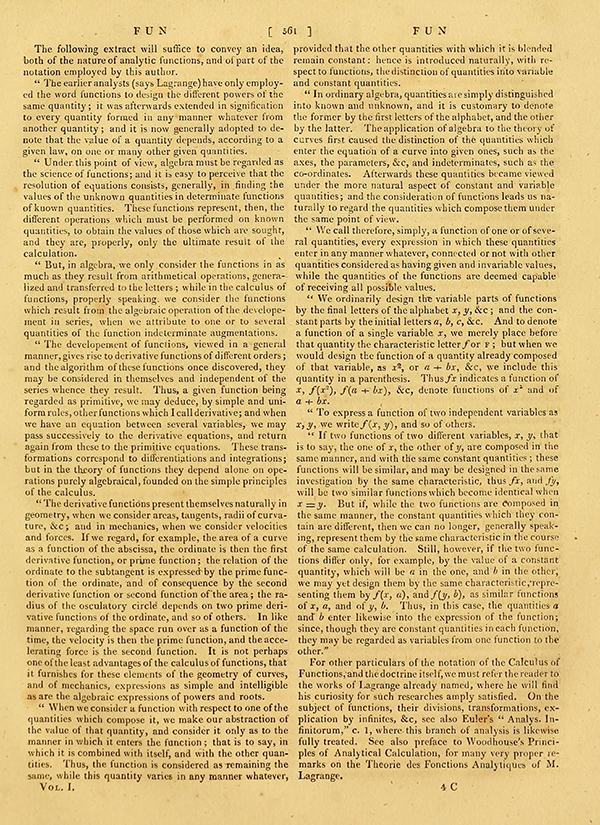
The geometric design of fortifications was still very much an application of mathematics in the early 19th century. Plate XII illustrates five designs for the wall of a fortification. These designs are intended to reduce the effects of cannon bombardment as well as discourage infantry assaults.

“Imaginary quantity” is discussed on page 675. Note the alternate descriptive term “impossible quantity.” The concept of a complex number was yet to be fully understood.
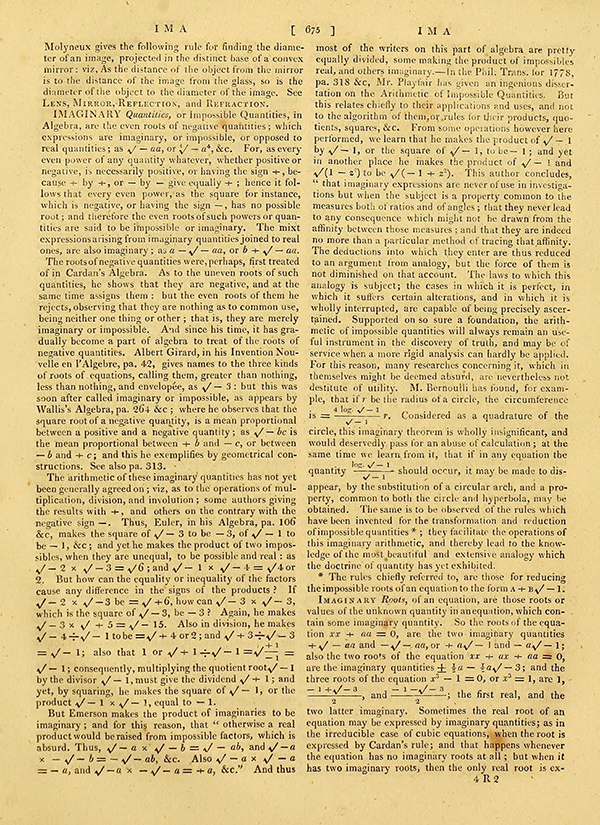
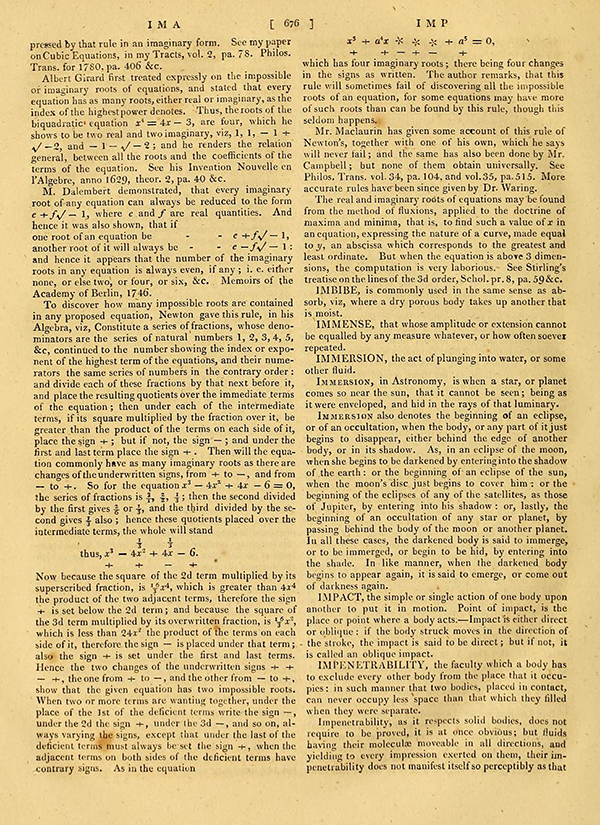
Theses images were obtained through the courtesy of the Biodiversity Heritage Library and were digitized by the University of California Libraries. The complete work can be viewed at http://www.biodiversitylibrary.org.
Frank J. Swetz (The Pennsylvania State University) , "Mathematical Treasure: Hutton’s Mathematical Dictionary," Convergence (July 2016)




